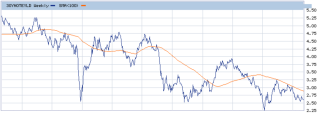Tonight Britain has passed a referendum calling for the country to leave the Eurozone. It looks like US markets will open down severely tomorrow. The British pound is down about 10% against the dollar, and Asian markets are sinking fast. So no question about it: we’re in for a roller coaster ride for a while.
Aside from short term market reactions, why should US citizens care about Brexit? We posit a few reasons:
- That the Brexit vote resulted in ‘leave’ and voter turnout was so strong, indicates that a revolution of sorts is under way. A rather large percentage of people are pretty tired of not feeling heard, all over the world. Policies will have to change, which will usher in even more uncertainty than we’ve already seen this decade.
- The success of Brexit may have an effect on our own fast-approaching election, or at least policies we pursue around immigration, trade, and so forth.
- After Brexit, it’s a certainty that we will see other European countries contriving their own versions of ‘exit’. How strange that a few years ago we all worried that Greece might be forced to leave (Grexit), and now we have a country that has chosen to leave.
- Well, ok, we can’t resist mentioning – if you ever wanted to visit England, now’s the time. It’s going to be cheaper!
Consequences of these shifting policies will reverberate to returns over time. We can’t possibly predict even the direction of the impact yet. For the time being, we view the ‘leave’ vote as a shot at buying assets at cheaper prices.
Finally, if you want to know why Brexit was entirely predictable, pick up a copy of The Revenge of Geography, by Robert D. Kaplan (reviewed on our Resources page here). Uncanny!

